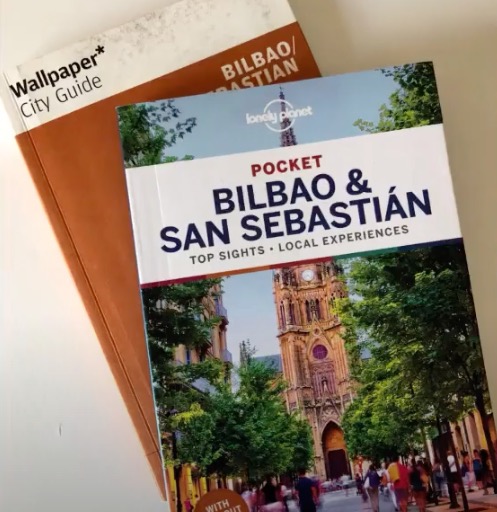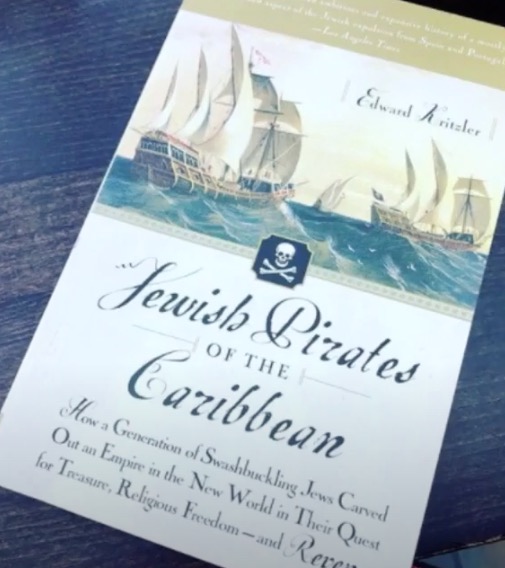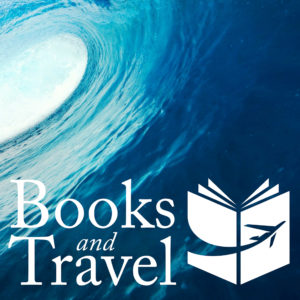In this video, I explain how I get my story ideas from travel — from how I decide to go to a place, and where I go when I get there, as well as how some of my thrillers have evolved from different trips.
You can watch the video below or here on YouTube.
Hello from Bath in the Southwest of England. I'm Jo Frances Penn and I write thrillers as J.F.Penn. In this video, I'm going to talk about the number one question that I get asked and all authors get asked which is, “Where do you get your ideas from?”
There are a number of ways I get ideas, but probably my number one is traveling. And I wanted to record this video because as I record it in mid-May 2020 I'm in lockdown. Bath is a lovely place to be locked down, but still, I can't travel. So in this video, I'll be talking a bit about how I usually travel.
Decide on a place and do initial research
First of all, I decide on a place and it might be because I want to write a book about it, or because it's a place I want to go and I know I'm going to find ideas there.
On a recent trip — in fact, the last time we were able to travel, — we went to San Sebastian and Bilbao in Northern Spain. I bought guidebooks. Now I always buy Lonely Planet guide books, I've been using them for many years, like 30 years or something. So always good to have a Lonely Planet. And then I also quite like the Wallpaper City Guides and other slightly more quirky guidebooks for other things, especially cultural places.
I'll also go to the Atlas Obscura website and search where I'm going because they have loads of really interesting and unusual places. They also have some great books — this is the second edition, I also have the first edition because I really love their work. A lot of people submit their interesting places to Atlas Obscura. So always a good place to go if you're visiting, because those places are often not in the guidebooks.
Make an itinerary
Once I've decided on the places that I need to visit in said location, I will make an itinerary. The reason this is important is because many places are not open every day. In Europe, for example, museums and art galleries, like the Guggenheim here in Bilbao are not open on a Monday. And in fact, when we went to San Sebastian in Bilbao, I had to rearrange the trip because of getting there on a Monday and not being able to go to the gallery.
That is really important you don't want to be somewhere for a short amount of time and not be able to visit the place you want to visit. And if you're going at high season, it's always good to book tickets for museums, art galleries, anything you want to go to in advance. When it's peak travel season, in some of these places, it can be really hard to get into various museums, so I always like to buy my tickets online before I go to avoid any queues.
So if you're wondering, this is the exterior of the Guggenheim in Bilbao, it is a gorgeous building if you like architecture like I do. [More pics here on Instagram]. And this is the Maman sculpture by Louise Bourgeois, which I saw 20 years ago at the Tate Modern back in the day. And now there are copies around the world but this is one of them. The museum is incredible. If you get to go, look at it in different light. There's also a fog exhibit that comes out, it's just a beautiful place.
Be open to serendipity
When I get to a place and my husband, Jonathan, is often with me, we don't necessarily follow the itinerary every step of the way. We might visit a museum and then see what else comes up. What's interesting is I'm always open to serendipity. And some of the places I thought would really inspire me, end up not being the place that inspired a story.
One example is Amsterdam. This is me in the Oude Kerk in the old city of Amsterdam, and I really thought that it would inspire me with a story. It's a great church, it's right in the red-light district, and it is an interesting church, but I just felt nothing there.
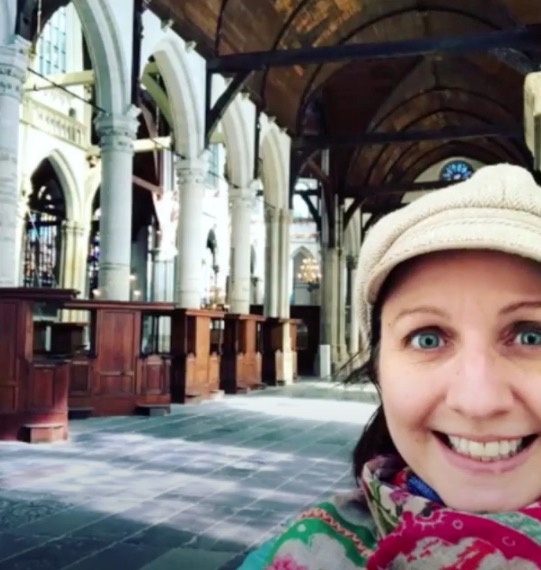
I love going to churches, always go to churches, cathedrals, places of worship, synagogues. I'm looking for story and I take pictures and I see what's going on but this one didn't do anything for me. And we went to lots of places in Amsterdam, but the place where I got an idea, the seed of the idea, which will become ARKANE book 11 Tree of Life is the Ets Haim synagogue and the library, and Ets Haim means Tree of Life [which is the working title for the book.]
I had no idea there were so many Portuguese Jews in Amsterdam after they were thrown out of Spain and then Portugal back in the 15th century. So I was surprised by what we found at Ets Haim and that was the place that turned out to have the kernel of a story.
[You can find more pics and unusual things about Amsterdam here.]
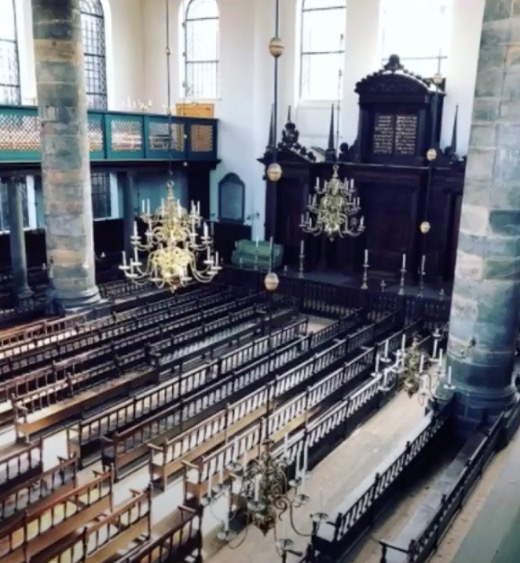
Find and read unusual books
I also get a lot of ideas from nonfiction books, and I always pick up books when I'm traveling because you can often find books that you just can't stumble upon online or in a bookstore back in your country.
This is what I found in the Ets Haim library's bookstore, which is a great bookstore, it's called Jewish Pirates of the Caribbean. And when I saw this book, I was like, ‘whoa, I did not have any clue about this.' This is a nonfiction book, this is not a joke.
It's full of incredible research about some of the Jews who left Portugal and also Amsterdam and sort of took over the Caribbean — or not took it over but, you know, had a base there and that's a really interesting book. So that will also go into my research for Tree of Life.
Follow your curiosity
So it's really about following your curiosity. If something catches my eye and I think, ‘well, that's interesting,' then I assume that my readers are also going to find it interesting. So in this case, I bought the book, I bought some other books about Ets Haim, so I have that for my research and my writing later. And I should say, as I'm recording this in May 2020, so I haven't started writing Tree of Life, I'm just thinking about ideas.
We went to Amsterdam over a year ago. I knew I was going to put it in a book, but I didn't really know what it would turn into. So it's more like — I go places and collect ideas and then they come out later in book form.
Follow the trail of story
Once we went to Amsterdam and found the Portuguese synagogue, I said to Jonathan, ‘I think we should go to Portugal.' So we went to Lisbon later in the year. This is me by the Henry the Navigator Monument to the Discoveries.
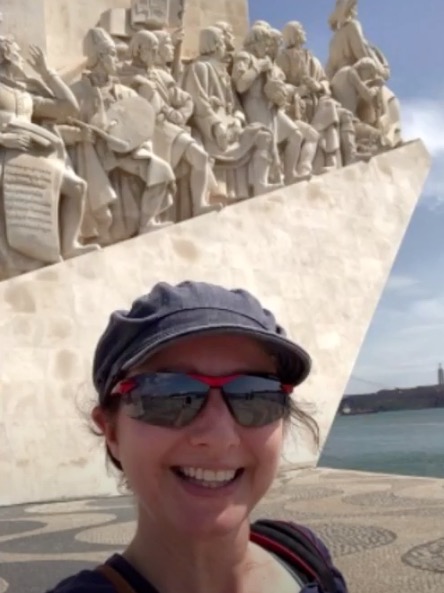
The Portuguese empire is fascinating. There are so many things that have disappeared into history. You know, Portugal is not a massive empire now, but it sure was. So this is interesting to me, I love ancient empires. So that will be the kernel of the book too.
My thriller Valley Of Dry Bones is another example where the research spanned over a couple of years. So I was in New Orleans writing another book [Sacrifice] and I was in the St. Louis Cathedral in Jackson Square. I find very old cathedrals fascinating but obviously some of the ones in America are not as old as the ones here in Europe.
But I was at the back of the church and I turned around and there was this glass case with the Toledo Bible in it. And when I went closer, I was like, ‘Toledo, that's in Spain, what's that doing here?' And of course, I had learned a bit about the Spanish history of New Orleans, but it's much more well known for the French Quarter and I was in the French Quarter.

But there was this Toledo Bible, this lovely illustrated copy of the original, which was in Toledo in Spain. And I thought, there's definitely a story here, this is fascinating.
Then I went next door to The Cabildo and in that place, I found this painting. This is Father Antonio de Sedella known as Père Antoine. He was the Supreme Officer of the Holy Inquisition of Cartagena in Louisiana. And that was just so cool. He also happened to know Marie Laveau, the Voodoo Queen, and thus the link between voodoo and Catholicism and the inquisition was born for the story of Valley Of Dry Bones.
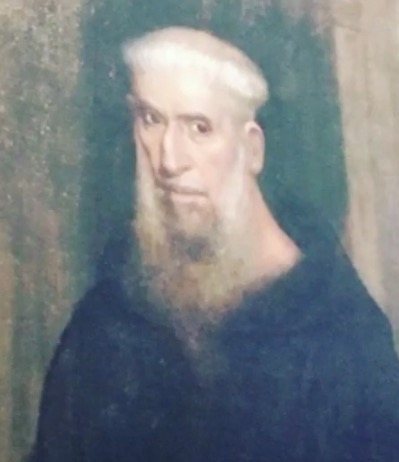
This then led me to Toledo. If you go to Madrid in Spain, Toledo is a really short train ride from Madrid, it's an incredible city. This is a view from the hill overlooking the city.
I absolutely recommend the bus tour if you go, you get this view across and it's a stunning place, and the cathedral there is just huge. But essentially I found the original Bible there just in a little corner, you know, nothing too crazy. We also visited the synagogue, which is a really old synagogue and that is where I found some more of the story that went into Valley Of Dry Bones.
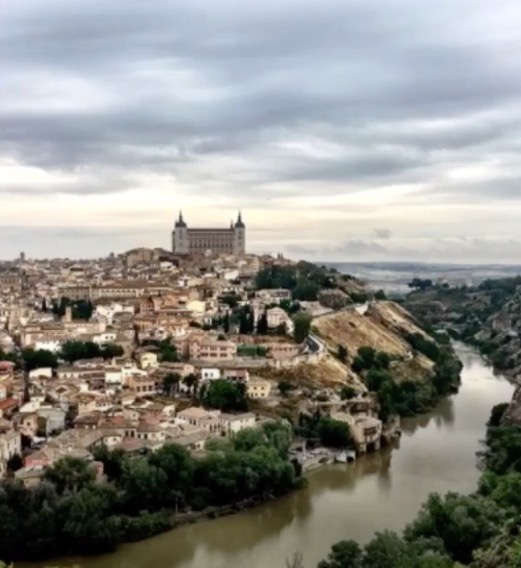
Synchronicity. If you look for story, you will find it and/or it finds you perhaps.
But the synchronicity doesn't end there. This is what I love about being a thriller writer. If you look for story, you will find it and/or it finds you perhaps.
I had been in San Francisco like a year before or something like that. It was a while back. This is me at Alcatraz.

If you've read Valley Of Dry Bones, you know that Alcatraz is an important part of the story. But I visited Alcatraz and the challenge with many of these places is — how do you write something that someone hasn't written before? Because, of course, there are so many books written about many of these places, and that's part of the fun and the challenge.
I went to San Francisco, I visited Mission Dolores and looked at the links with the Spanish there and came across this friar, Junípero Serra. There was a tiny relic in the church and I was like ‘that's not really enough to hang a story on.' But then we went to Majorca, a Spanish island in the Balearics. We went into Palma Cathedral, this is it.

By the way, if you go, Palma is best known for beach resorts. But the old medieval city is fantastic with really narrow streets. When the Templars were there, people couldn't invade so easily. It has a gorgeous cathedral. And that is the baldachin above the altar and this is made by Gaudi. And Gaudi of course, a Spanish architect, who designed the Sagrada Familia in Barcelona which I had in my book Gates of Hell, just brilliant. And I was just stunned to walk in and see this beautiful church.
So we were walking around the old city and we were heading back to the hotel and went around the corner and saw this. The Franciscan monastery where Junípero Serra — first of all he was born in Majorca, and this is him with the ‘natives,' which is terrible. Of course, there's much controversy over what the Spanish did to the indigenous people of Mexico and the United States, but history being history, this is what happened.
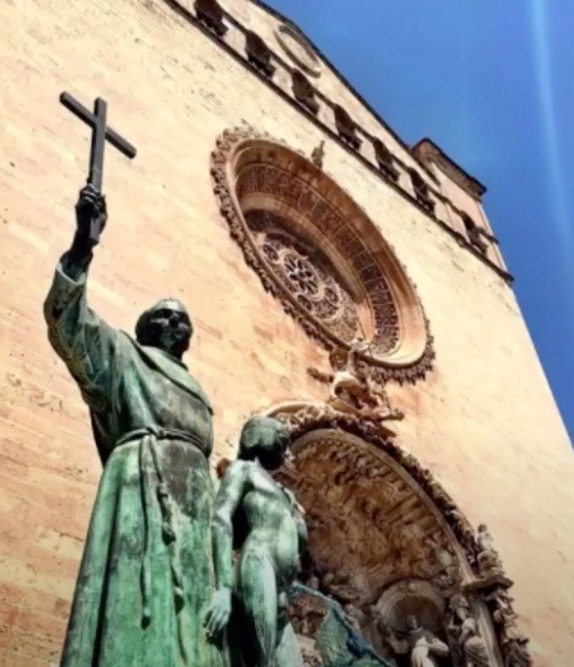
And he traveled from Majorca to Mexico I think it was, and then went up and founded the missions up the West Coast of the USA. And so I found this and I was like, ‘okay, wow, I have to write about this guy,' I can now see the link to Spain. I hadn't even realized the extent of the links. So this went in the book too. So that is quite a complicated version of what happened when I was researching and writing Valley Of Dry Bones.
And sometimes this is why my books take a while to write because I am looking for story and then what's interesting is how things hang together. Because my aim, especially with my ARKANE thrillers, is to write a story that could be true and then twist it slightly into thriller and fiction. So a lot of it is true. And in my Author's notes at the back of the books, I always write where things came from and where I visited and the books and interesting things that you might find useful.
The story in where I walk every day
But a simpler example is when we moved to Bath in the southwest of England a few years back. This shop was just around the corner from our flat where we first rented, it's Jonathan Potter's antique map shop.
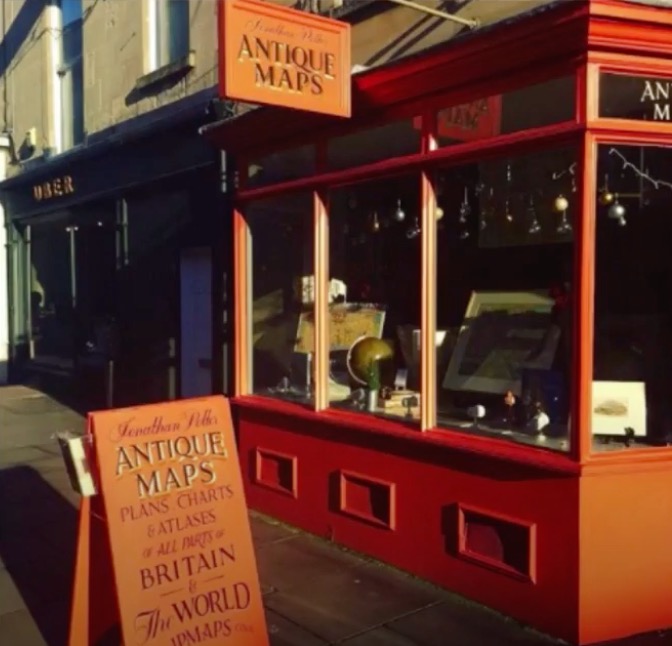
I loved walking past this shop. You can just see there the globe and some pictures in the windows. He had these very expensive, many of them, many thousands of pounds to get one of these maps. And I would walk past pretty much every day, I would walk past this shop and I would look in the window.
Eventually, I went in, I bought his book on maps and had a bit of a chat. Only about a year later, he retired and that is no longer a map shop in Bath, it's in a street called Margaret Buildings. The shop is not a map shop anymore.
What was so crazy is that it actually sparked the idea for the whole Mapwalker series. The premise is essentially what if you could walk through maps? You didn't have to get on a plane. In fact, right now, as I record this in the time of coronavirus, it would be great if we could just walk through maps and there was some kind of virus protector as well, I guess!
But that shop spawned the whole Mapwalker series because I just thought, well, you know, this was quite an old guy and then he retired. As I said, the shop isn't there anymore. And I thought, well, what if his granddaughter inherited the shop under dastardly circumstances and what would happen if she discovered this ability to walk through maps? And that's how the books were born. And there's lots of other things in those books, but I just wanted to give some examples of how I find ideas.
Visit museums and specific exhibitions
I also get a lot of ideas from museums. This is one of my perennial favorites, the British Museum in London. If you are in London, please visit the British Museum, it is a cornucopia of incredible things and is featured in a number of my books.

One of the exhibitions was on religious relics many years ago now, and that was the foundation of Crypt of Bone. I also visited the Sunken Egypt exhibition and wrote this short story, The Dark Queen, which was sparked by a sculpture of a goddess that they pulled up from the depths.
Then, of course, Day of the Vikings is actually set during an exhibition at the British Museum, which I also attended on vikings. There was this curled up sword which fascinated me, and a huge replica, well, it wasn't a replica, it was an actual boat, the actual viking boat was there. And I thought, what if a group of neo-vikings stormed the British Museum to find one of these objects?
That's the basis of Day of the Vikings which you can actually get for free at jfpenn.com/free. And that book was again inspired by an exhibition.
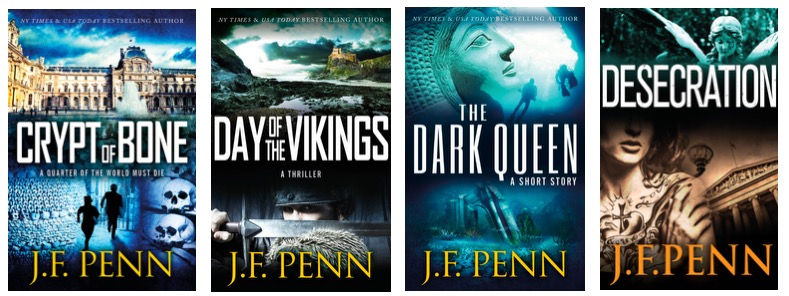
In Desecration, my London Crime thriller trilogy, the researcher, Blake Daniel, works at the British Museum. I've always thought that if I wasn't a writer, perhaps I would have been in, another life, an archeologist or an archivist or a museum researcher or something like that. And course, I do put a lot of myself into my books.
You can see many more of my pictures, I take a lot of pictures, I live with my iPhone in my hand when I do my walks around my research trips. But you can see all my photos and follow me on Instagram.com/jfpennauthor and Facebook.com/jfpennauthor.
So that's it for this video. If you have any questions or thoughts or comments about me doing videos because I want to do more of them, please do leave a comment below.
If you enjoyed this and you like podcasts, I have a podcast about travel where I interview people about the travels behind their books and also talk about much more around my own travels. Check out Books And Travel Podcast on your favorite podcast app or at BooksandTravel.page. And as I mentioned, if you want to try a free thriller, you can get Day of the Vikings at jfpenn.com/free. So happy reading until next time.
